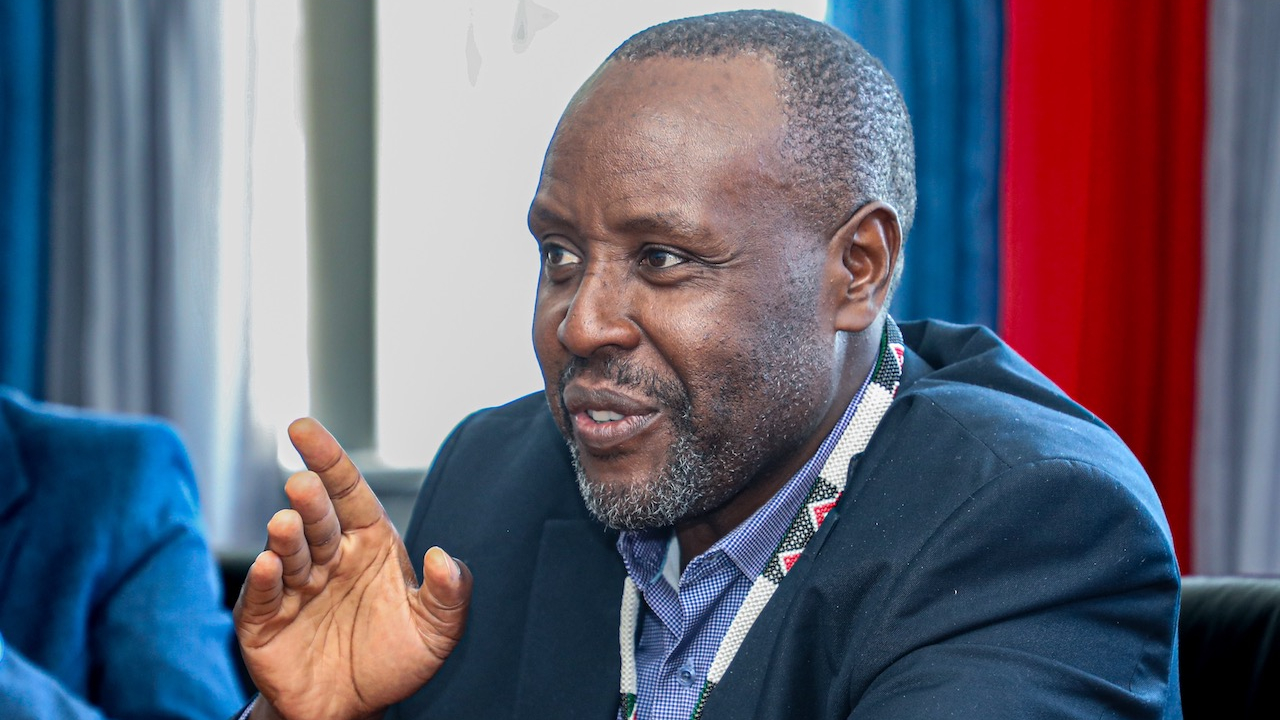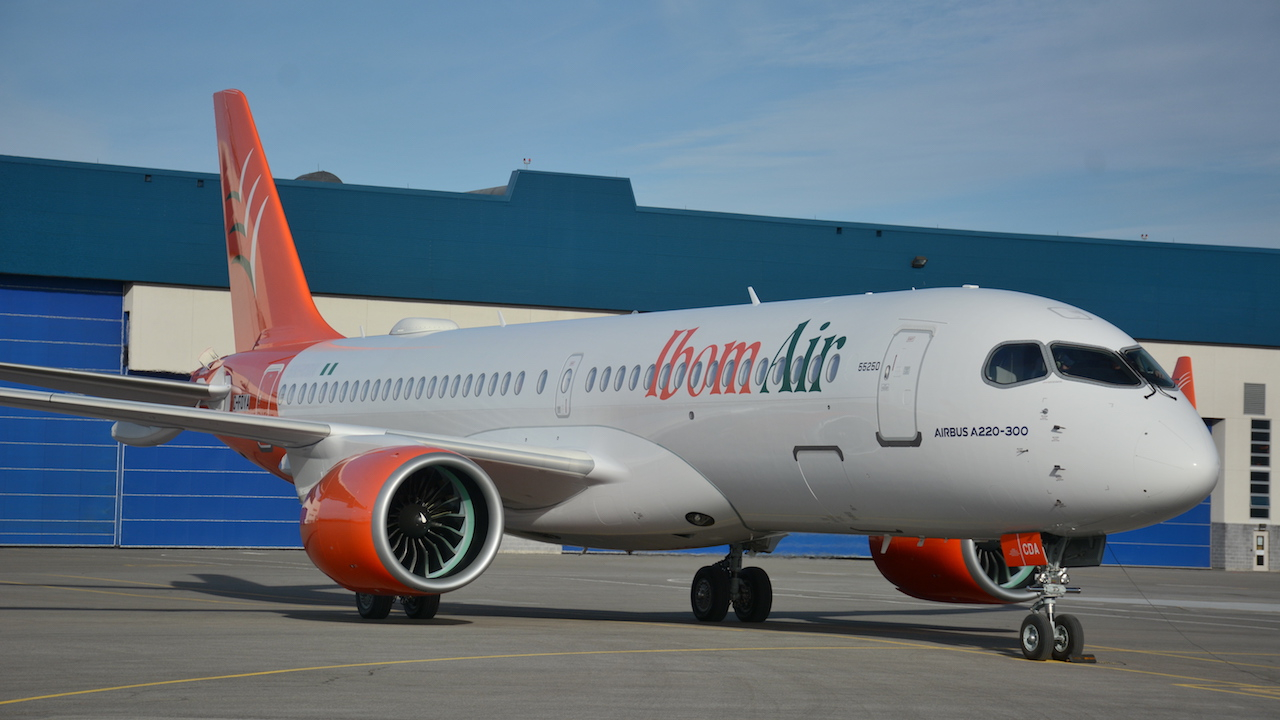Allan's key to restoring pride
Having overseen Kenya Airways’ first profit for a decade, chief executive Allan Kilavuka is turning his attention to securing long-term financial sustainability. Graham Dunn reports from Nairobi.

'We need to densify Africa, there are many gaps in Africa we need to fill.' Allan Kilavuka. IMAGE: IATA
After Kenya Airways disclosed its first net profit for more than a decade at the end of March, its chief executive Allan Kilavuka could be forgiven for reflecting on a tough job achieved.
After all, Kilavuka, who formally took the helm of the carrier in early 2020, just as the pandemic hit, has spent much of the past five years fighting a rearguard action. That was not just in the face of the Covid crisis, which crippled the whole air transport sector, but also the underlying challenges at Kenya Airways, which has seen it in restructuring mode for much of the last 10 years.
However, despite the profit return, Kilavuka is aware the restructuring of the carrier is far from complete.
“It’s a big milestone,” Kilavuka acknowledged, speaking to African Aerospace on the sidelines of IATA’s Ground Handing Conference in Nairobi during mid-May – notably the first time the event has been held on the continent in its 37-year history.
Kenya Airways posted a net profit of KShs5.4 billion (US$41.5m) for the year ending 31 December 2024, turning around a loss of KShs22.7 billion (US$180m) as the first phase of its Project Kifaru restructuring efforts paid dividend. That was driven by a six per cent rise in turnover to KShs188m (US$1.46m) while passenger numbers increased four per cent to 5.2 million and cargo volumes up a quarter.
“To be completely honest, it’s a bit better than we expected,” Kilavuka said. “Last year we made the highest profit in the history of the company, the highest revenues, the highest number of passengers.
“But we are not done yet,” he added.
Kilavuka, a former GE and Deloitte executive, had been running Kenya Airways’ budget airline Jambojet since December 2018 when the call came to take charge of the wider group.
Kenya Airways – which has the strapline ‘The Pride of Africa’ – had for many years been something of a poster child for African aviation; having enjoyed modest, but stable profitability, being among the first in the region to join a global alliance in the shape of SkyTeam and securing investment from Dutch carrier KLM. However, as it expanded, the carrier began running into financial challenges and has been hampered by legacy costs and debts since.
Kilavuka set about resetting the business, striving to improve the airline’s fundamentals and its operations under its Kifaru restructuring programme. It struck fresh labour deals to boost productivity, optimised its fleet and network, and reached agreements with lessors and suppliers to lower its cost base.
But while Kilavuka could point to improvement in the underlying performance of the business – Kenya Airways recorded an operating profit in 2023 – fuel price volatility and foreign exchange losses continued to stifle the airline’s net result until last year’s record performance.
Capital key
In another sign of Kenya Airways’ stabilisation, the financial recovery also paved the way for trading in the carrier’s shares to resume on the Nairobi Stock Exchange in January. Trading in Kenya Airways shares had been suspended for more than four years amid Covid and after the government floated the idea – which it subsequently dropped – of nationalising Kenya Airways.
However, if the results last year – which were supported by a stable currency and a more benign fuel price environment – are better than Kilavuka may have dared hope, progress is still needed on the next step towards the carrier’s long-term financially sustainability.
“Now we have to capitalise the business,” Kilavuka said. “In fact, our original plan was that by 2024 we would have fresh capital, and that fresh capital was supposed to help us to expand and do some Cap Ex, so refurbishing of the aircraft, engines and so on. And we are late.
“For us to recapitalise we have to get approvals from our shareholders and our principle shareholder [the Kenyan government] is yet to give us the express approval,” he explained. “In the meantime we are doing it informally as we wait for the approvals. We have a few leads that are looking very promising, but nothing yet that we are able to announce. We hope that this year we will be able to announce an investor.”
Securing a strategic investor is also vital to the carrier being able to meet its longer-term goals, which include ambitions to double revenue and passenger numbers by 2030. “The plan for the next five years is the airline will increase its fleet, from 34 to close to 60 – including widebody cargo aircraft,” he said. “So, there is a concern in terms of the pace of the capitalisation.”
That task is made even harder given the challenge airlines globally face in securing aircraft, both with supply chain issues hitting availability and affordability today and delivery dates for new aircraft at a time where manufacturer backlogs are booked out for the coming years.
“This plan is subject to availability of aircraft,” Kilavuka said, “which currently we don’t have availability. In fact, it [the availability] is worse than it was when we set up the plan.
“And the fact we have not been able to recapitalise means we cannot place the orders just yet. So, this is why it’s important for us to get the approvals and then we can announce our plans and place our orders.”
Strategic plan
Kilavuka says the airline has a plan approved by the board, which would need to be validated by any new strategic investor, which envisages adding aircraft next year. “But once we have the strategic investor, we will actually place orders for brand new aircraft from the OEMs. That’s next year. So, we would have clarity on how exactly the 2030 vision will roll out.”
The airline operates a passenger jet fleet of Embraer 190s, Boeing 737-800s and Boeing 787 Dreamliners. Kilavuka said it would be looking at both narrowbody and widebody aircraft as part of a new fleet order.
A further plank of the strategic growth plan is diversifying by growing its cargo activity to 20 per cent of its overall business. The airline added two Boeing 737-800 freighters last year, helping it boost cargo tonnage 25 per cent in 2024 with notable expansion of services in the Middle East.
Kilavuka says the first step in meeting its cargo aspirations is to better use its existing assets. The two 737-800s joined the carrier’s two existing 737-300 freighters.
But the airline is also looking at bringing in widebody freighters as put of its cargo development. “We are looking at Boeing 767-300s, two of them, and to use the belly [space] more efficiently and hopefully we are able to expand next year,” Kilavuka said.
During 2024, Kenya Airways restored flights to Maputo in Mozambique, while also adding flights to the Somalia capital Mogadishu and domestic services to Eldoret. But Kilavuka sees far more potential to connect Africa.
“We need to densify Africa, there are many gaps in Africa we need to fill,” Kilavuka said. “For example, we don’t fly to Gaborone, we don’t fly to Windhoek in Namibia. There are very many cities we don’t fly to. We need to densify the network, that’s the opportunity because we are a network airline.”
One network opportunity the carrier is looking at progressing in West Africa is Accra in Ghana, where Kilavuka discussed the possibility of Kenya Airways establishing a secondary hub during an early May meeting with Ghana president John Dramani Mahama.
“Then we have lots of opportunity in Asia, particularly India and China. We fly to those places, but there are opportunities for different cities as well.” Kenya Airways currently serves Mumbai and Guangzhou respectively, as well as the Thai capital Bangkok.
The carrier will add a second London operation in July, when it begins services from Nairobi’s Jomo Kenyatta International airport to Gatwick. Kenya already serves Heathrow daily.
The carrier has begun codesharing on the Heathrow route and beyond with recent SkyTeam recruit, Virgin Atlantic. It also serves Paris Charles de Gaulle and Amsterdam Schiphol in Europe, the respective hubs of SkyTeam partners Air France and KLM.
“In Europe we only fly to three places, and we use the network of our partners airlines to fly, but we have opportunities to exploit. Istanbul is a very attractive one.” Kilavuka said.
Kenya Airways, which also serves Dubai and New York JFK internationally, also recently reiterated its interest in potential services to Mexico.
“There are many, many opportunities. We just have to roll them out very systematically, so we don’t overheat as well,” said Kilavuka.
Crucially, Kenya Airways is also seeking to tap into partners to develop this connectivity, particularly within Africa. However, there has been little headway in a mooted wider link-up with South African Airways.
Kenya Airways had tentatively teamed up on a partnership initiative with SAA in 2021 with a view to potentially creating a pan-African airline holding company. But after agreeing an initial codeshare, and with both carriers working through restructuring efforts, this appears to have gained little traction.
“I have to admit that we have had little progress,” said Kilavuka, noting this is unfortunate given that Kenya Airways is now “ready to move” having finished the first stage of its restructuring.
Intriguingly, Kilavuka was himself linked with the top job at SAA earlier this year as the state-owned carrier sought to appoint a full-time CEO. In the end, South African transport minister Barbara Creecy confirmed she had opted to re-appoint John Lamola to the SAA CEO role.
With little movement on a wider partnership with SAA, Kenya Airways has in the meantime identified other opportunities within Africa. “The whole point is how we utilise our assets, how we expand inorganically using each other’s assets,” said Kilavuka. “We are identifying, even if they are less formal, partnerships and we see a lot of opportunities for us to utilise our assets collectively better.”
And Kilavuka is in no doubt of the need to grow in scale. “We definitely need to be bigger,” he said. “Because the smaller you are, the higher the unit cost. For us, we would spread out our fixed costs to a larger operation.
“We therefore need to expand,” Kilavuka said. “And we can either expand organically or inorganically through partnerships. So, we choose partnerships as a faster way to expand.”
Growth hurdles
During a press conference at IGHC in Nairobi, IATA director general Willie Walsh flagged the strong performance of traffic growth in African aviation since the pandemic.
“If we look at where Africa is today versus 2019, it’s about 14 per cent, 15 per cent ahead of where it was, which I think is a significant development and points to the opportunity that exists in Africa,” he said.
Kilavuka, however, notes that this growth remains off a low base and believes governments in the region need to do more to enable Africa’s “fragmented” aviation sector to prosper.
“It is important for us to grow aviation and to grow it fast,” he said. “Governments in Africa need to address the challenges and the obstacles that are put in front of aviation players, including very high taxes in Africa and the related costs that translate to high ticket prices.
“That is why it is very difficult for African operators to be efficient because of these obstacles and also there is inferior infrastructure,” he said, noting the need to update airports and air traffic control systems in the region.
Stay up to date
Subscribe to the free Times Aerospace newsletter and receive the latest content every week. We'll never share your email address.

